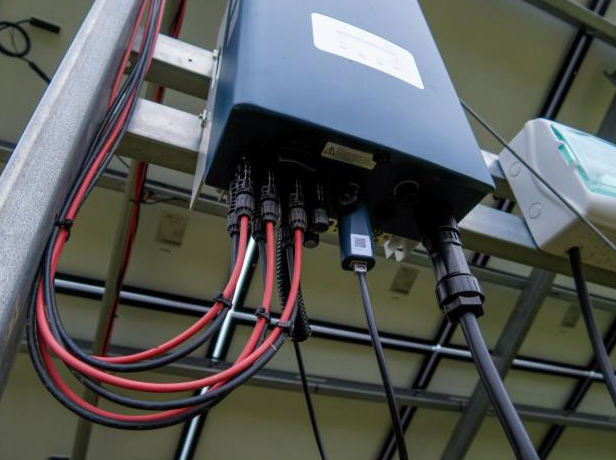Solar Inverter Sizing for Pole Buildings: A Guide to Optimal Energy Efficiency

Imagine you’ve just set up solar panels on your new pole building and are excited to start using solar energy. To make sure you get the most out of your new system, choosing the right solar inverter and solar inverter charger is important. The solar inverter converts the electricity from your panels into the type your building uses, while the solar inverter charger helps store extra energy for later use. In this guide, we’ll explain how to size your solar inverter correctly for your pole building.

Choosing the Right Solar Inverter for Your Pole Building
When it comes to large and open pole buildings, choosing the right size for your solar inverter requires some special consideration. Unlike traditional buildings with lots of rooms and walls, pole buildings have a simple, wide-open design. However, you still need to be careful to ensure that your solar system works well and uses energy efficiently.
1. Assess Your Energy Needs – Before you pick an inverter, take the time to review and understand how much energy you’ll need. Consider all the electrical appliances and systems in your pole building, from lighting and heating to machinery or storage systems. For example, if your pole building serves as a workshop or barn, you should account for the extra energy used by tools, equipment, and possibly climate control systems. 2. Calculate Solar Panel Output – Next, determine the output of your solar panels. This is usually measured in watts and depends on your panels’ size and efficiency. For pole
buildings with large roof areas, you might be installing a significant number of panels. Calculate the total wattage they produce to match it with an appropriately sized inverter.
3. Match Inverter Capacity with Panel Output – Once you have the total wattage of your solar panels, choose an inverter that can handle this output. As a general rule of thumb, select an inverter with a capacity that exceeds your total panel output by a small margin. For example, if your panels generate 6,000 watts, consider an inverter with a capacity of around 6,600 to 7,000 watts. This makes sure the inverter can handle the highest power levels and any future increases in your panel’s efficiency.
4. Consider the Type of Inverter – Solar inverters come in a lot of types, such as string inverters, microinverters, and hybrid inverters. String inverters are common and cost-effective for larger installations like those on pole buildings. The microinverters are best for systems with shading problems or panels facing various directions. Hybrid inverters combine solar power with battery storage, offering more flexibility if you plan to store excess energy.
5. Consider Oversizing the Solar Array – You can improve your solar system’s efficiency by making the solar array up to 33% larger than the inverter’s capacity, which helps in low-light conditions. However, if the array is too big, it might produce more energy than the inverter can handle during peak sunlight, causing energy loss. For the best size recommendation, consult a solar expert for personalized advice.
6. Account for Environmental Factors – Pole buildings, especially those used for agricultural or industrial purposes, may be exposed to varying environmental conditions. Make sure your solar inverter is suited to the local weather conditions where it’ll be placed. For instance, if your pole building is located in an area with extreme temperatures or high humidity, select an inverter with appropriate weatherproofing and cooling features.
7. Plan for Future Expansion – If you’re thinking about expanding your solar system later on, keep that in mind when sizing your inverter. It’s a good idea to pick an inverter with a higher capacity or one that’s easy to upgrade. This way, you won’t face extra costs or headaches if you decide to add more panels or storage down the road.
Key Steps to Size Your Solar Inverter and Charger for Your Pole Building
Sizing a solar inverter for your pole building involves more than just picking the right wattage. You must evaluate your energy requirements, determine the power output of your panels, and make plans for upcoming updates. The solar inverter charger ensures that the energy from your panels is converted effectively to power your pole building. Choosing the right inverter means your solar system will meet your current needs and adapt to any future changes, helping you get the most out of your investment in renewable energy.
—Author Bio: Khristal Asoque is a content writer for Phocos, crafting informative pieces that captivate the readers. She simplifies complex ideas, ensuring they are both clear and engaging for a diverse audience.






